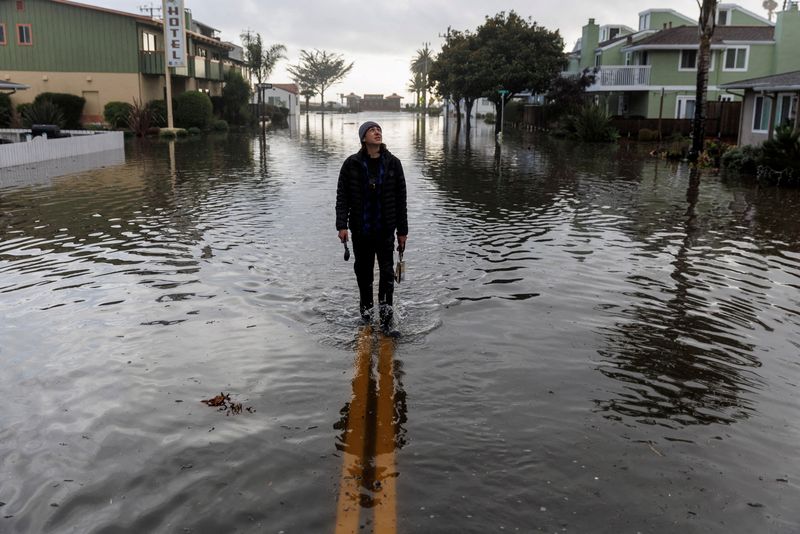Heavy rains in California will not solve problem with drought
2023.01.12 07:20

Heavy rains in California will not solve problem with drought
By Kristina Sobol
Budrigannews.com – Seven atmospheric rivers have dumped up to 30 inches (76 cm) of rain on some parts of California since Dec. 26, but the drought that has gripped the western United States is far from over.
Since virtually none of the storms have reached the Colorado River basin, the river that supplies 40 million people in seven states with drinking water will continue to be in danger.
California will not be able to solve its long-term water crisis without major infrastructure investments to capture more storm water, restore floodplains, and recycle wastewater, even if there are more atmospheric rivers predicted in the near future.
In the meantime, the agricultural sector in California, worth $50 billion, continues to consume 80% of the state’s supply.
Extreme weather is a result of climate change. It is anticipated that California’s occasional wet years will be excessively wet as it experiences more severe droughts and heat waves. However, the state’s water infrastructure, most of which was constructed in the 20th century when the population was barely half of what it is today—40 million people—is not up to the new challenges.
The Metropolitan Water District of Southern California declared a drought emergency on December 14 for the region’s 19 million residents. After a few weeks, major flooding submerged the state.
The state’s major reservoirs are still far below their historical average, despite an estimated deluge of more than 20 trillion gallons (80 trillion liters). State data indicate that the two largest reservoirs, Shasta and Oroville, are still operating at 42% and 47% capacity, respectively.
The deficit highlights the severity of the drought. According to a study that was recently published in the scientific journal Nature, the 22 years from 2000 to 2021 in southwestern North America were the driest in at least 1,200 years.
The majority of the state’s infrastructure consists of cement canals and does not have the capacity to collect excessive stormwater.
Most irrigation and flood control projects were made to move water in straight lines as quickly as possible. That prevents water from flowing naturally in a meandering path through flood plains, which would better safeguard cities nearby from flooding and assist in recharging the aquifer below.
Each spring, the snowpack in the mountains melts more quickly as temperatures rise, and the state lacks sufficient storage capacity to conserve the runoff.
Gavin Newsom, the governor of California, intends to increase spending on infrastructure, with $8.6 billion allocated for drought and flood management in the upcoming year. In 2021, President Joe Biden will sign a significant U.S. infrastructure law that makes billions more available.
However, excess stormwater will continue to flow into the Pacific Ocean until that money is used for projects.
In order to quench its thirst, the dry Southern California relies on two external sources: aqueous Northern California via extensive state and federal transportation networks; and the Colorado River, which is part of a century-old agreement that gives water to seven states, with California getting the most.
However, the states were given more water than the river can now provide because the compact was written after an unusually wet period. The Colorado River suffers more from overuse than from a lack of precipitation, despite the fact that the Colorado River basin is experiencing its own drought and the atmospheric rivers are unable to provide any relief.
The seven states in the compact—Arizona, California, Colorado, Nevada, New Mexico, Utah, and Wyoming—have been notified by the U.S. Bureau of Reclamation that they must negotiate a new agreement by January 31 to reduce consumption by 15% to 30% or face mandatory cuts from the federal government.
More King Charles will appear in public for first time after memoir of Harry’s son








